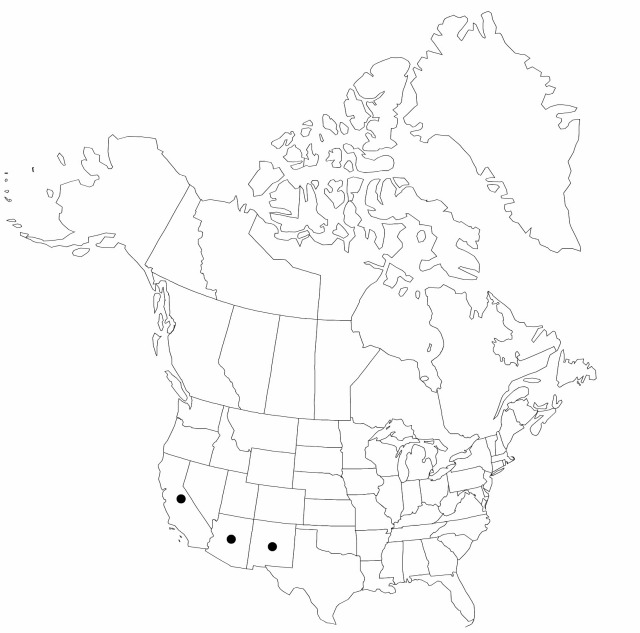Carex spissa
Proc. Amer. Acad. Arts 22: 70. 1887.
Culms obtusely angled, 110 cm × 5 mm, glabrous. Leaves: sheaths with red-brown spots, to 60 cm, backs green or red tinged, fronts membranous, apex concave to V-shaped; blades 120 cm × 7–18 mm, leathery, margins revolute, prominently keeled, antrorsely scabrous on margins and keel, glaucous when young, glossy adaxially, surface papillose abaxially. Inflorescences with 5–20 spikes, 25–80 cm; pistillate spikes 4–10, 3–13 cm × 10–12 mm. Scales red-brown with broad yellow-brown midrib, oblong, 3.5 × 1 mm, margins hyaline, apex acuminate or retuse, awn 0.5–3 mm, ciliate. Anthers 3–4 mm. Perigynia pale brown, with uniformly distributed red-brown spots, somewhat flattened to strongly inflated distally, 3.5–4.8 × 1.5–2.5 mm, base cuneate, apex obtuse, somewhat glaucous; beak red-brown, flared, abaxially obliquely bidentately cut, 0.5 mm. Achenes dark brown, stipitate, ellipsoid, 2 × 1.2 mm.
Phenology: Fruiting Apr–Jun.
Habitat: Stream banks, wet seeps, sometimes on serpentine
Elevation: lower than 600 m in Calif.
Distribution

Ariz., Calif., N.Mex., Mexico.
Discussion
Carex spissa has been divided into three taxa, distinguished in the extreme as C. spissa with glabrous, few-veined, strongly inflated perigynia; C. ultra with glabrous, veined, flattened perigynia; and C. seatoniana with hispid, veined, somewhat inflated perigynia and short-awned or acuminate scales. Intermediates between all three varieties are more frequent than the typical extremes (F. J. Hermann 1970). No consistent patterns of variation in perigynium or scale morphology can be determined or correlated with geographic distribution although considerable variation, particularly in perigynium morphology, is present. Further research based on analysis of variation at the population level may provide insights into relationships and differentiation within the problematic taxon. Carex spissa is distinguished from the related C. pringlei L. H. Bailey by the obovoid, rather than ovoid or elliptic, perigynia, and the abrupt, rather than tapering, beak as well as by habitat. Carex pringlei appears to be restricted to wet, saline soils and is not known from north of Mexico.
Selected References
None.
